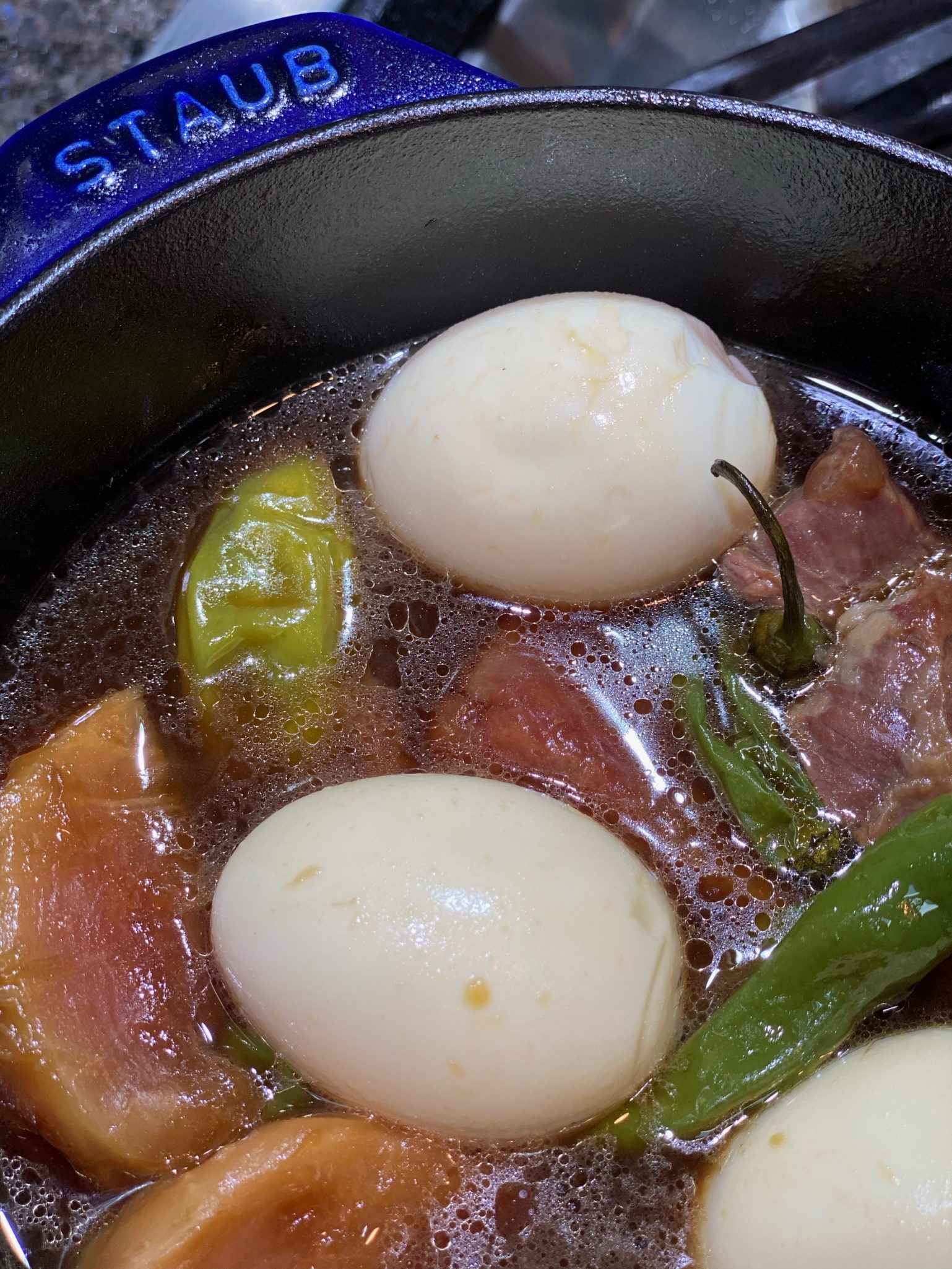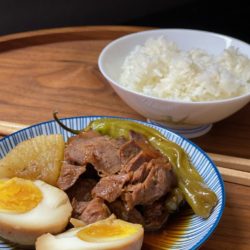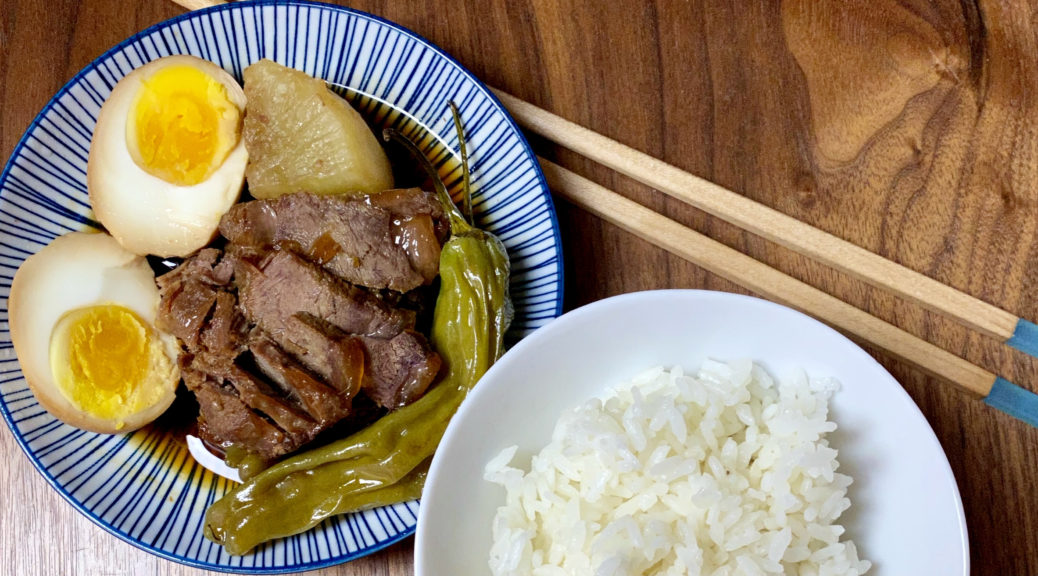
Jangjorim (Soy Braised Beef 장조림)
I have a total backlog of recipes I want to share with you and this one is top of the list. I have made this as many times as I have made Eric Kim’s Quick Grape Tomato Banchan or Ottolenghi’s Charred Tomato and Cold Yogurt (so good) and that is saying a lot.
Do You Banchan?
Jangjorim or Soy Braised Beef can be served as banchan (those yummy little dishes that come with every Korean meal) or as a topping to a rice bowl or in a bento box.
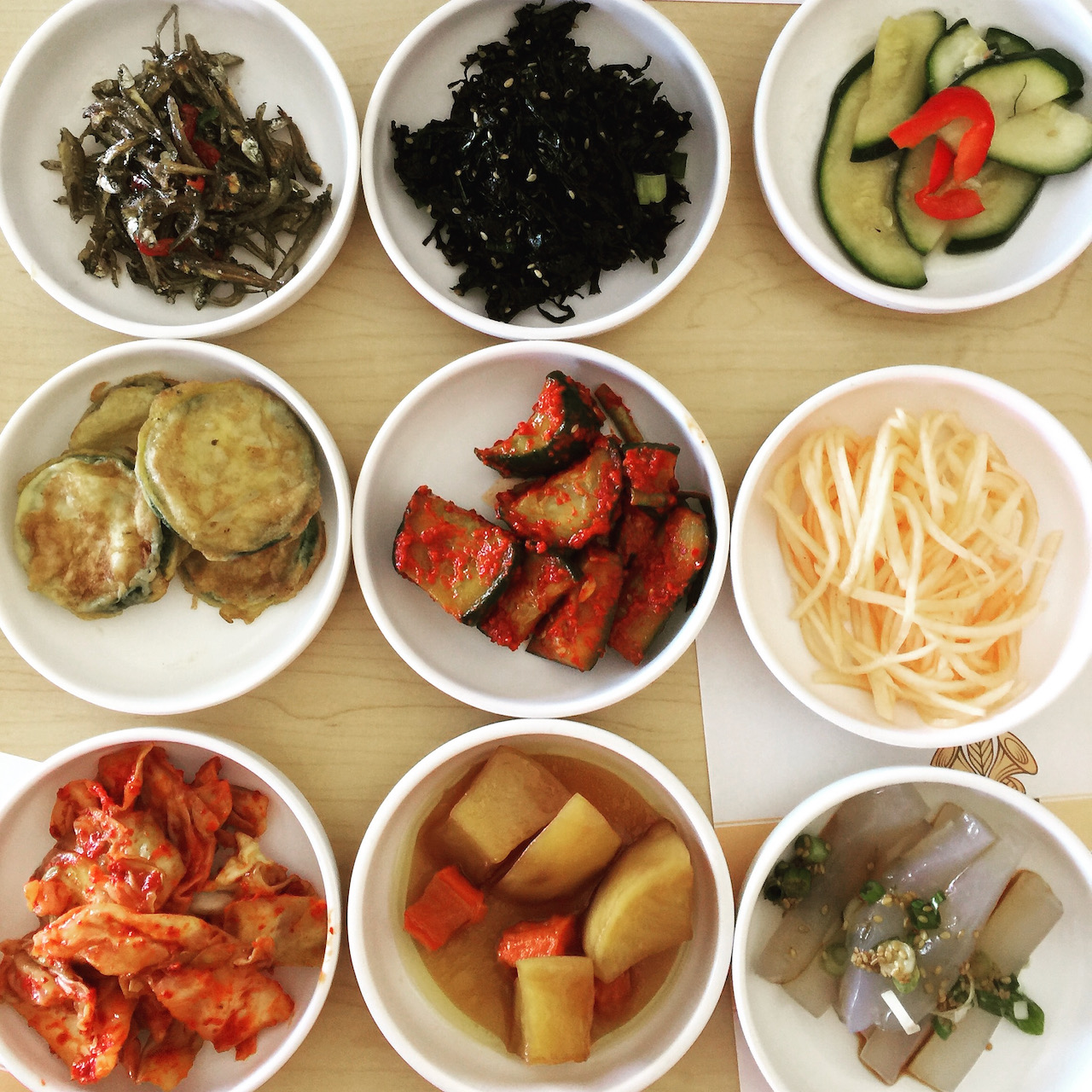
I’m not a salad lover. Well, let me rephrase that, I’m not a salad maker…so much trouble. But banchan? Worth the trouble, I’ll make a batch of each, keep them in the fridge and pull ’em out for lunch and/or dinner. They go with everything, rice, noodles, or sammies. Want a little funkiness in your grill cheese, add kimchi (김치). Want crunch and spice in your noodles, add spicy cucumbers (오이무침). Pickled or braised veggies go so well with rice, maybe that’s why I like them.
Koreanbapsang’s recipe for Jangjorim is my starting point. First step, make the stock to cook the meat. The stock includes onions, scallions, garlic and Korean radish (mu,무). The radish gives the dish sweetness, I save the radish to serve with the Jangjorim. It’s delicious.
Shank-alicious
Next, cut beef into cubes and simmer in the stock. Use brisket, flank, chuck, or my favorite, shank. Shank is both flavorful and economical, win-win. For those not familiar with shank, it comes cut crosswise into pieces with the bone in the center. Remove the meat from the bone and cut it into pieces. Throw the bones into the cooking broth for extra flavor. I’ve also used pork shoulder or butt as a substitute with nods of approval from the fam. After simmering, remove the meat and place it in another pot along with 2.5 cups of the original stock and add the seasonings. Reserve the radish. Cook meat on medium heat for approximately 20 minutes. Then add shishito peppers, boiled, peeled eggs, kelp (optional), and the reserved radish. Cook for another 10 minutes or until meat is tender.
Shishito peppers can be a bit spicy, so if you have little kids or big kids that are spice averse, use bell peppers or Anaheim peppers, and cut into manageable bite-sized pieces. Cook eggs as you would six-minute ramen eggs. Chill eggs thoroughly before final braising to avoid overcooking the eggs. Normally, the eggs are hard-boiled but jammy eggs are my jam.
Jangjorim can be served at room temperature to warm as banchan or over rice. The meat can be shredded or sliced. It’s so flavorful, a little bit goes a long way.
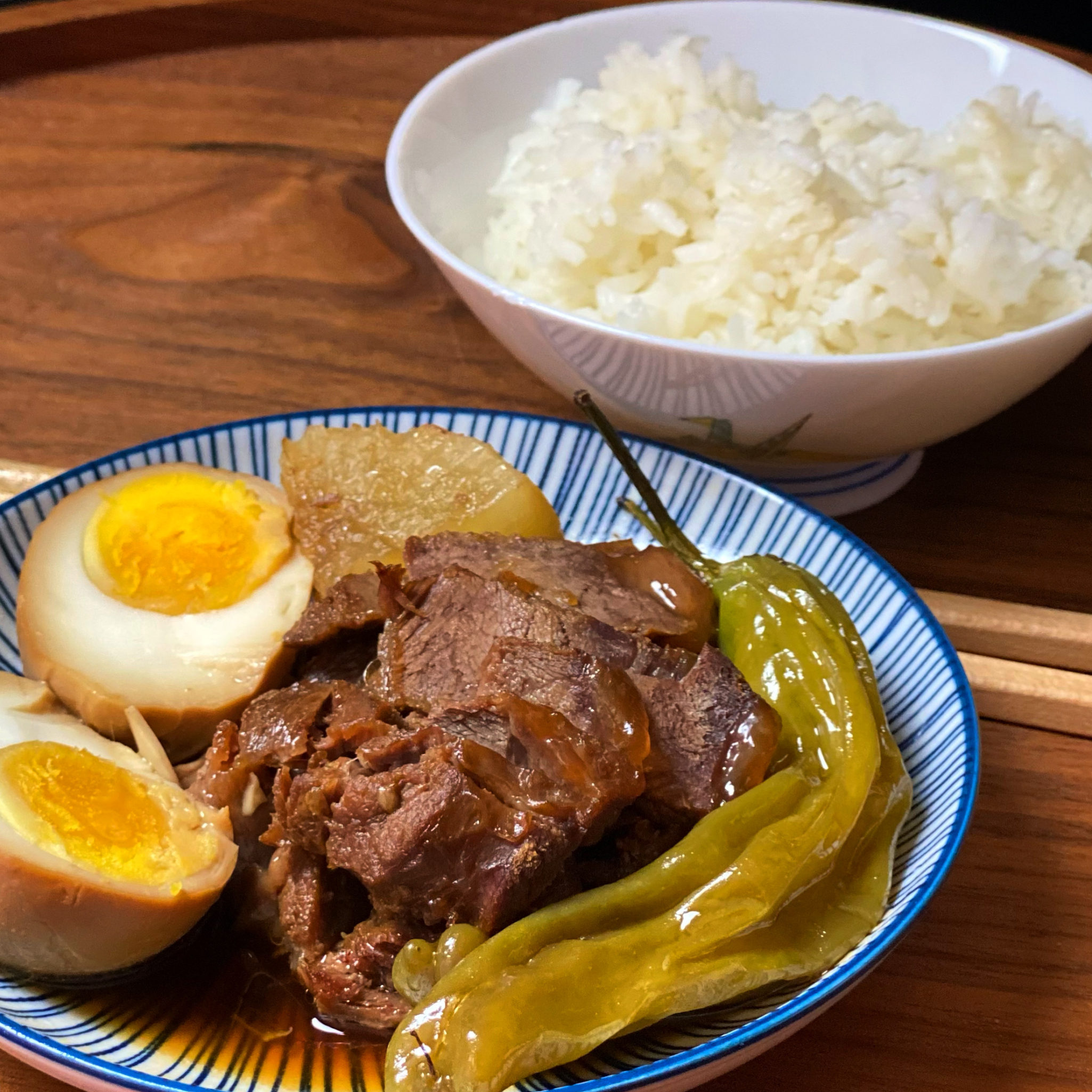
I love this dish and hope you will try it!
Jangjorim (Soy braised Beef)
Ingredients
Da Stars
- 1.5 pounds shank meat or beef brisket you can sub pork shoulder or butt
- 10 to 12 Shishito peppers or other fresh green peppers Use less and cut into halves if using large peppers
- 3 boiled eggs* peeled
Da Stock
- 1/2 medium yellow onion
- 2 stalks scallions white part only save green parts for garnish
- 6 ounces Korean radish (about 1/4-1/3 of one radish) mu, cut into big chunks
- 7 cloves garlic
- 3 slices thin ginger about 1-inch round
- 1/2 teaspoon whole black peppers or ground peppers to taste
Da Sauce
- 5 tablespoons soy sauce
- 2 tablespoons soup soy sauce guk ganjang, 국간장 (or use more regular soy sauce)
- 3 tablespoons sugar
- 3 tablespoons rice wine or mirin
- 1 piece 3-inch square dried kelp substitute a bay leaf
Instructions
- Cut the beef into 2-inch chunks. This recipe is very flexible. You use brisket or flank. I love beef beef shank which is very economical. It has great flavor and texture. You could even use pork shoulder or butt. Delicious!
- In a medium pot, bring 8 cups of water and Da Stock ingredients to a boil. Cover and continue to boil for 5 minutes over medium-high heat.
- Drop the meat into the pot. Bring it to a gentle boil, and remove the scum. Reduce the heat to medium. Boil, covered, for about 30 minutes.
- Remove the meat. Strain the cooking liquid into a large bowl, and then add 2.5 cups of the liquid back to the pot. (You can save the remaining broth to make a soup or stew later.)
- Add the meat and sauce ingredients to the pot. Bring it to a boil over high heat. Reduce the heat to medium, and boil, covered, until the meat is tender and the sauce is reduced to about ⅓, about 20 minutes. You can cook longer if the meat is still not tender enough.
- Add the optional dried kelp, peppers and eggs and continue to boil for about 10 minutes. Discard the kelp, and transfer everything else to an airtight container for storage. Cool before storing in the fridge. Shred the meat and pour some sauce over to serve.
- Optional: Serve the radish and onions with this dish! Normally, the meat is shredded, and served with shishito peppers and eggs.
Notes
The meat will become hard in the fridge. You can soften it by leaving the shredded beef out at room temperature for 20 to 30 minutes, or microwave for about 20 seconds to soften.
